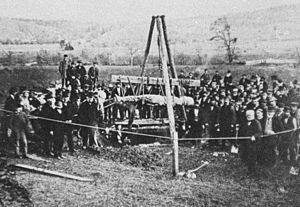Who deserves control over a historical narrative when its key players are spread across nations and cultures? This is the question that Professor Sarah Abrevaya Stein attempts to answer with her research on the documentation of Jews living under French rule in Algeria from 1830 to 1962. She began by studying the history of the colonization and its societal impact on Jews living in both the northern and southern regions of the nation. The French conquered northern Algeria first and subsequently attempted to transform the Jews into typical French citizens. Therefore, they were granted the same legal status as the colonizers, a markedly different one than was later granted to the Jews of southern Algeria. Those Jews were more resistant to subjugation and therefore declared indigenous subjects. This label “outsourced” legal control to the rabbis and other leaders in the Jewish community.
The difference in treatment of the Jews became a problem when, towards the end of the Algerian war of independence, the French decided they wanted to undo the north/south differentiation they had created to allow Jews to immigrate to France. To do so, they forged paperwork for those southern Jews that didn’t have any. This documentation was particularly faulty because some Jews wished to change their names to make them sound more French or to claim a relation to a famous historical figure.
Professor Stein was unable to find any easy answers to the question of ownership, particularly due to the lack of international cooperation and clear access to historical databases. These difficulties exemplify the complexity of narrative ownership due to colonization and immigration. Countries across the globe, particularly in Africa and the Middle East, are confronted with this same issue today.






